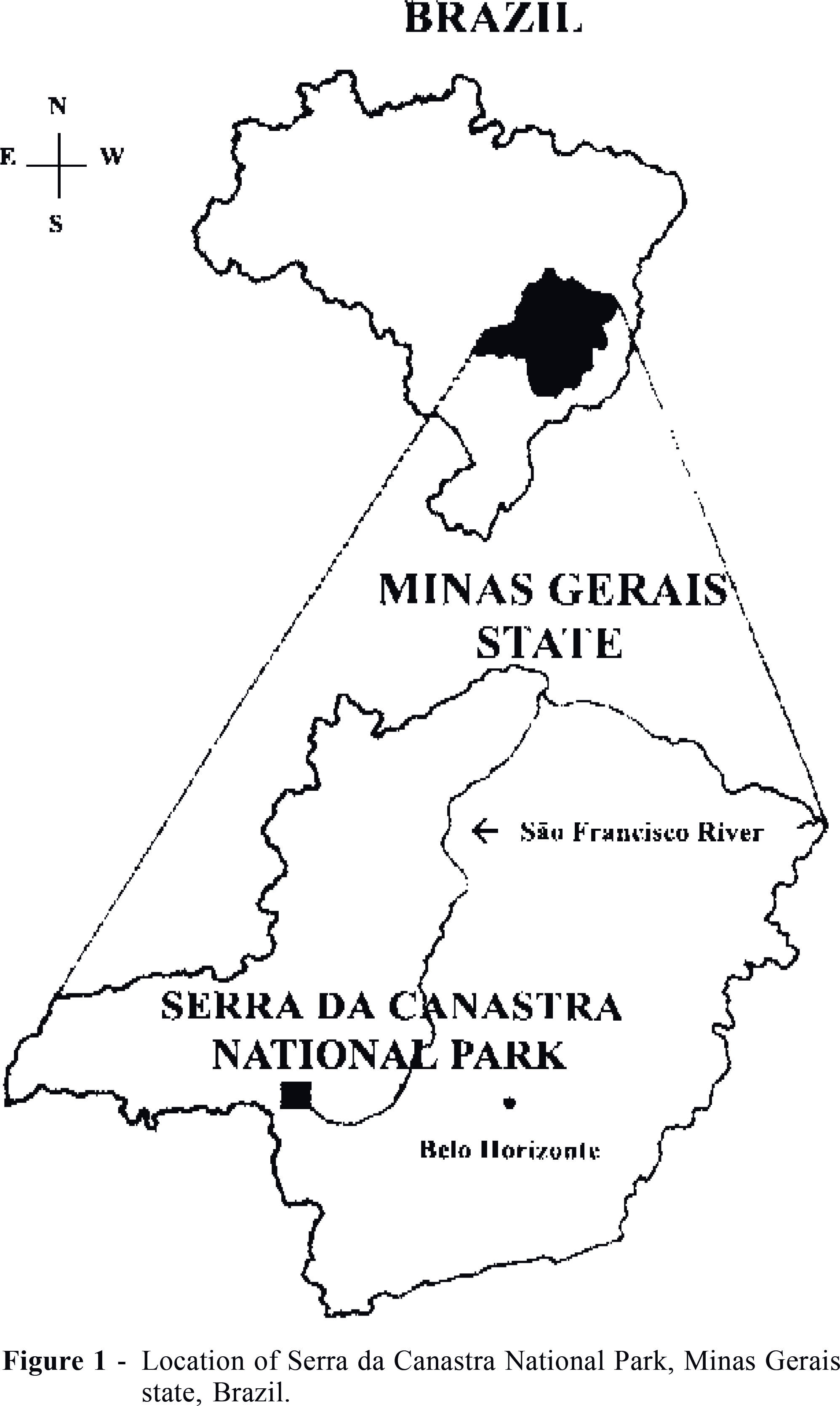Bird species richness in natural forest patches in southeast Brazil
DOI:
https://doi.org/10.35699/2675-5327.2002.21806Keywords:
Birds, Brazil, Forest patches, FragmentationAbstract
Studies of populations in fragmented habitats have become essential tools in biodiversity conservation. This study was conducted at 14 natural forest patches (“capões”) in the Serra da Canastra National Park, with the purpose of evaluating bird species richness of these patches in relation to patch area and distance to other patches. In this study, area and isolation did not explain much of the variation in bird richness and abundance when all species were considered. However, when only forest-dependent species were considered, both area and isolation were significantly related to patch richness, suggesting that the distribution of these birds is highly related to forest patch area and is limited by dispersal ability of the species through the matrix. But, some individuals of some forest-dependent species (Thamnophilus caerulescens, and Basileuterus leucophrys) were also found in the very small (0.05 ha) or most isolated (430 to 700 m) patches. This fact may be related to an adaptation of these species to the naturally fragmented landscape, since this is a landscape which have not been altered considerably in the last two centuries. Our results showed that this natural landscape of small and isolated forest patches imbedded in a grassland matrix may support populations of several forest-dependent species of birds, increasing the regional biodiversity.
Downloads

Downloads
Published
How to Cite
Issue
Section
License

This work is licensed under a Creative Commons Attribution-NonCommercial 4.0 International License.
